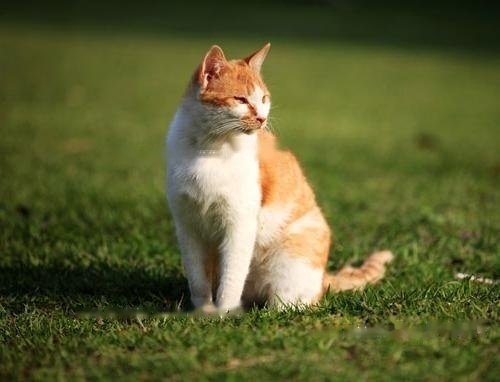Cat is talented and intelligent, active by nature, likes to play, and has strong curiosity. He has a strong interest in bugs, balls of thread, ropes, paper balls, and leaves blown by the wind. He often plays with and plays with these things. Fan. Usually, under the teasing of the owner, cats can also instinctively make various interesting movements such as rolling, turning their limbs upside down, and standing upright. However, it is much more difficult to train cats to perform some of the more complex movements than dogs. This is because cats are very independent and have an unusually tenacious and unwilling to be manipulated character. What the cat likes, the owner does not let it do, and what it does not like, it is often not satisfied by forcing it to do it. In addition, cats are naturally alert and are prone to fear of strong light and crowds, so it is difficult to perform in public.

However, with patience and scientific methods, cats can be trained and trained in a relatively short period of time. The completion of all behaviors of cats is based on neural reflexes. The so-called reflex activity is the process in which the body reacts through the activity of the nervous system after the receptors of the body are stimulated. The occurrence of reflex activities must be stimulated. Stimuli are those that can be sensed by the body's tissue cells and can cause a certain response. Changing internal and external environmental factors. Such as tapping, pressing. Light, sound, temperature, etc. There are various sensitive receptors in cats, such as vision, hearing, smell, and various temperature, pain, and touch receptors in the skin. They can sense different stimuli separately and convert these stimuli into neural excitation processes. When the excitation reaches the brain along the afferent nerves, the brain responds immediately, and sends instructions to the effectors (muscles, glands, etc.) through the efferent nerves, so that the effectors make corresponding actions.
The reflexes of animals can be divided into two categories: unconditioned and conditioned. Unconditioned reflex is an innate reflex that is born, and it is the most basic and important reflex activity for animals to maintain life. If a kitten is born, it will feed on milk and breathe. Stimuli that can induce unconditioned reflexes are called unconditioned stimuli, such as food, touch, tapping, etc. Conditioned reflex is a neural reflex activity that is gradually formed after animals are born and adapts to the living environment in the process of life, and is acquired the day after tomorrow. This kind of reflex is a high-level neural activity that ensures a high degree of balance between the animal body and the surrounding environment. It is a habit formed in the process of feeding and management and various abilities cultivated through training. This is an individual-specific reflex activity.
The unconditioned reflex of cats is the basis of conditioning. Any kind of conditioned reflex is on the basis of unconditioned reflex, applying effective means of stimulation to make cats form the ability that people need. Therefore, training a cat uses the cat's conditioned reflex. when training cats. The passwords and gestures issued by the owner, the cat does not understand its real meaning, but through training to develop a habit. That is, when the cat hears a certain password and sees a certain gesture, it will act accordingly.
![[Dog Training 5] The training method of pet dog dining etiquette](/static/img/12192/12192_1.jpg)




